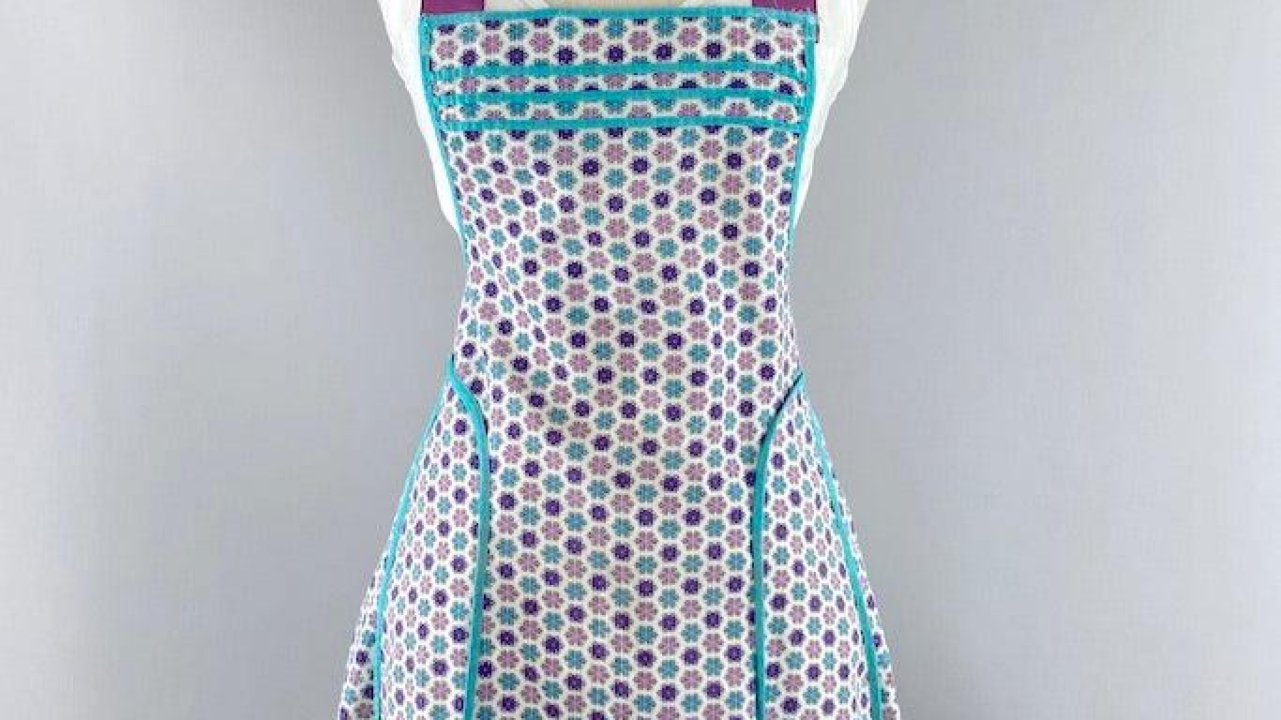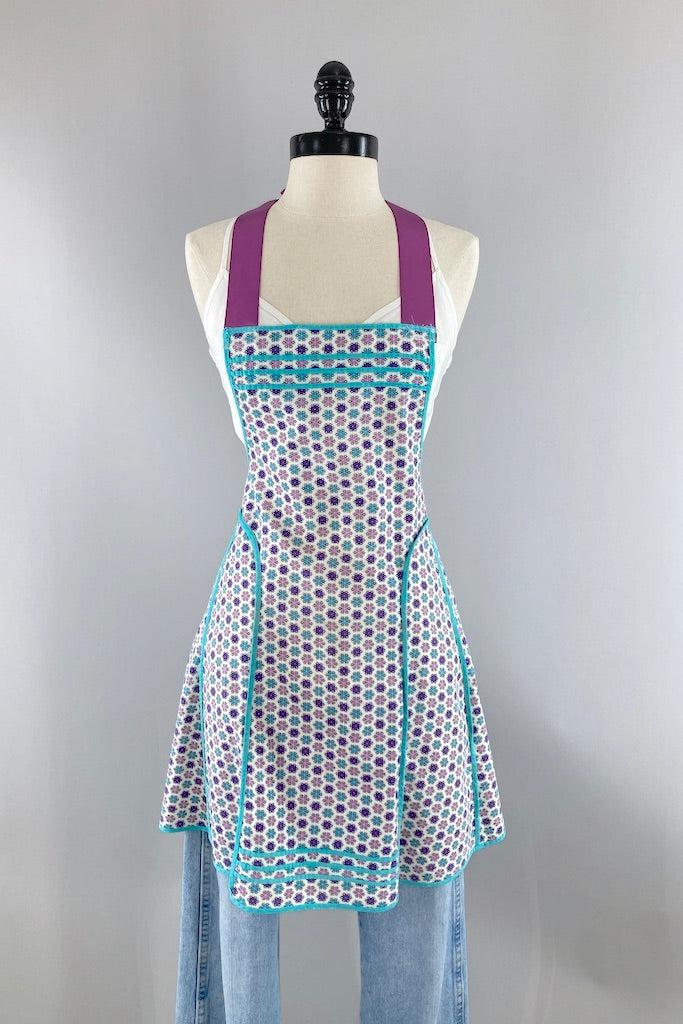AllVintageStyles
The Vintage Fashion Encyclopedia
Apron


A vintage apron is a protective garment worn over clothing during domestic tasks that became iconic of 1950s housewife culture, featuring decorative prints, practical construction, and feminine details that transformed utilitarian workwear into fashionable domestic accessories.
Quick Facts
- Era: 1940s-1960s (peak popularity 1950-1959)
- Origin: United States (post-war domestic culture and housewife fashion)
- Garment Type: Protective over-garment for domestic tasks
- Key Identifiers: Ties at waist or neck, practical pockets, decorative prints, feminine styling
- Typical Resale Price: $20-$80 (authentic vintage pieces)
- Best For: Domestic vintage styling, pin-up fashion, and retro kitchen enthusiasts
History & Evolution
The vintage apron reached its peak of fashion significance during the 1950s when post-war domestic culture elevated housework to an art form, making aprons essential accessories for the idealized American housewife. These garments combined practical protection with feminine styling, featuring decorative prints, ruffles, and details that made domestic tasks appear glamorous and fashionable.
During the prosperous 1950s, aprons became symbols of domestic competence and feminine propriety, worn by suburban housewives who took pride in maintaining beautiful homes and preparing elaborate meals. The variety of styles included full coverage aprons for heavy cooking, dainty half-aprons for light housework, and elegant hostess aprons for entertaining guests.
Quality vintage aprons featured superior cotton construction, hand-finished details, and artistic prints ranging from cheerful florals to novelty kitchen motifs that reflected the era's optimistic domestic culture. Many were handmade with careful attention to practical details like reinforced pocket corners and secure tie construction. Today, authentic vintage aprons are prized for their superior construction and representation of mid-century domestic fashion.
Authentication Tips
Authentic Vintage Features:
- High-quality cotton construction with substantial weight and durability
- Hand-finished seams, hems, and decorative details typical of home sewing
- Period-appropriate prints including florals, gingham, and novelty kitchen motifs
- Practical construction with reinforced pockets and secure tie attachments
- Vintage sizing and proportions designed for 1950s dress silhouettes
Common Reproductions/Modern Pieces:
- Lightweight fabrics or synthetic materials not available in vintage production
- Modern printing techniques that create patterns foreign to vintage aesthetic
- Poor quality construction with machine overlocking instead of hand-finished details
- Contemporary proportions that don't match authentic vintage apron styling
- Cheap trim or decorative elements that compromise authentic domestic appearance
Styling & Use Cases
- Best for domestic vintage styling: Wear over 1950s dresses with vintage kitchen accessories for authentic housewife presentation
- Ideal for pin-up fashion: Style over fitted dresses with victory rolls and red lipstick for glamorous domestic pin-up looks
- Perfect for retro entertaining: Use for themed parties, vintage cooking demonstrations, or retro kitchen activities
Modern styling tips:
- Wear over contemporary casual clothing for functional kitchen work with vintage charm
- Use as unique layering pieces over modern dresses for unexpected vintage texture
- Incorporate into themed events or vintage-inspired home entertaining for authentic period atmosphere
FAQ
Q: How can I tell if an apron is authentic vintage?
A: Look for high-quality cotton construction, hand-finished details, period-appropriate prints, practical construction with reinforced elements, and vintage sizing. Authentic pieces show superior construction typical of 1950s domestic sewing.
Q: What's the typical price range for vintage aprons?
A: Authentic vintage aprons range from $20-$80 depending on condition, rarity of print, and construction quality. Handmade pieces or those with exceptional novelty prints command higher prices among collectors.
Q: How should I care for a vintage apron?
A: Machine wash gently in cold water and air dry to preserve cotton fabric and prevent shrinkage. Iron carefully to maintain crisp appearance and protect any decorative details or trim.
Q: What makes vintage aprons valuable to collectors?
A: Their representation of 1950s domestic culture and housewife ideals, superior cotton construction and hand-finished craftsmanship, artistic prints that reflect mid-century domestic optimism, and embodiment of the era's elevation of housework to fashionable feminine accomplishment.
📷: ThisBlueBird
